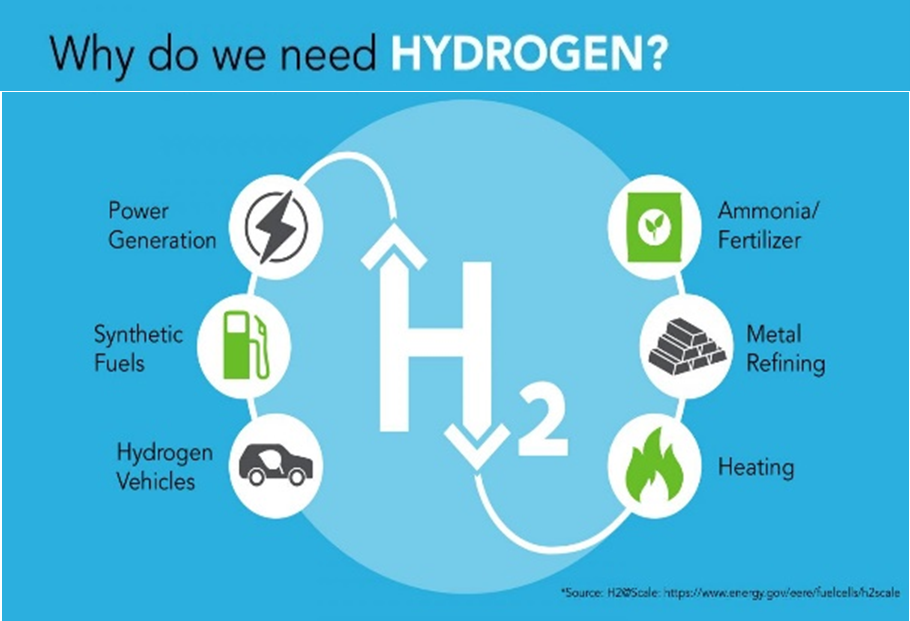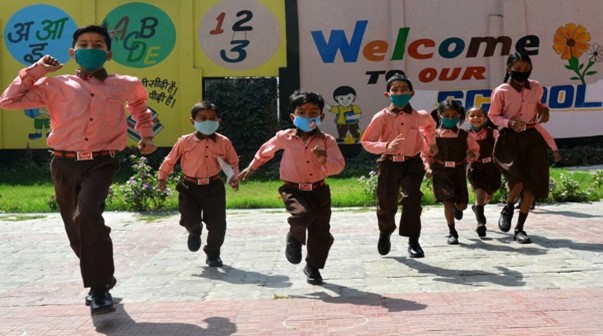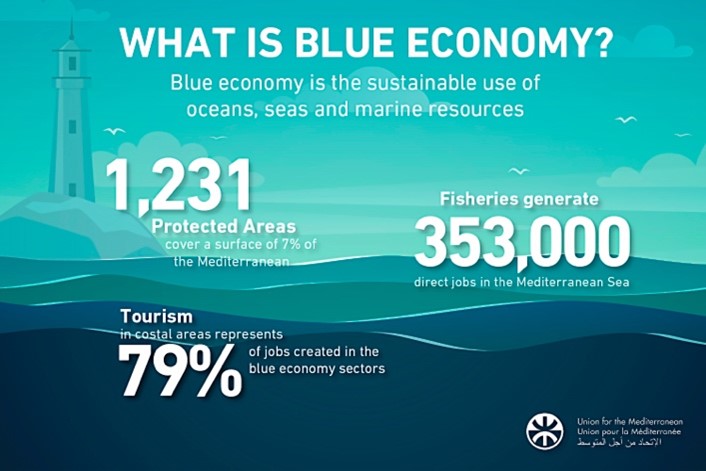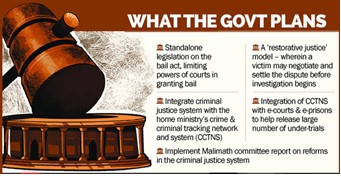Thursday, 24th February 2022
Draft Data Accessibility and Use Policy
In News
The Ministry of Electronics and Information Technology (MEITY) released a policy proposal titled as, “Draft India Data Accessibility & Use Policy, 2022”.
Need for such a policy
- The generation of citizen data is slated to increase exponentially in the next decade and India’s ambition of becoming $5 trillion digital economy depends on its ability to harness the value of data.
- The Economic Survey, 2019 had noted the commercial benefits of Government data exploitation by the private sector. Hence it becomes necessary to charge them for its use.
- There is a need to unlock the high value of data across the economy, to achieve a congruent and robust governance strategy, making Government data interoperable and instilling data skills and culture.
- The bottlenecks in the system include the absence of a body for policy monitoring and enforcement of data sharing efforts, absence of technical tools and standards for data sharing, identification of high value datasets and licensing and valuation frameworks.

Aim of the Draft Policy
- The policy will be applicable to all data and information created, generated, collected and/or archived by the Central Government.
- It would also allow State governments to adopt its provisions.
- India Data Office (IDO) under MEITY will be established for overall management and operationalisation with each government entity designating a Chief Data Officer.
- India Data Council will be formed as a consultative body for tasks that include finalisation of standards.
- The policy aims to make Government data open by default. A negative list of datasets will be maintained which cannot be shared.
- Existing data sets will be enriched or processed to attain greater value and termed as high-value datasets. All such data will be shared freely within government departments and also licensed to the private sector.
- There will be provisions for anonymisation and privacy preservation.
- All data portals/dashboards maintained by ministries/departments should be integrated through APIs or other appropriate integration mechanisms with the open government data portal.
Issues with the Draft Policy
- Privacy Issues: With the absence of a data protection law, accountability and remedy for privacy violations remain a matter of concern.
- Inter-departmental data sharing poses concerns of creation of 360-degree profiles and enable state-sponsored mass surveillance.
- No clarity on anonymisation: Since, the commercial value of the data increases with greater amounts of personal data, anonymisation and commercialisation are difficult to achieve simultaneously. There is a lack of legal accountability and independent regulatory oversight.
- The draft policy does not consider scientific analysis and the availability of automated tools for the re-identification of anonymous data.
- Lack of Transparency: There is only one mention of transparency and little to no mention of how such data sharing will help ensure demands for accountability and redress.
- Legislative hurdles: The policy bypasses parliament as it contemplates large scale data sharing and enrichment that will be borne from public funds. The administrative bodies to be established as per the policy, need to pass through respective legislative processes.
- Federal structure in data sharing: The policy, even though notes that State governments will be, “free to adopt portions of the policy,” does not specify how such freedom will be achieved.
- There is also the absence of any comment on whether data gathered from States may be sold by the Central government and whether the proceeds from it will be shared with the States.
For article related to this topic, refer:
https://edukemy.com/current-affairs/gazette/2022-02-23/data-privacy-control
https://edukemy.com/current-affairs/gazette/2022-02-08/high-frequency-data-for-policy-making
https://edukemy.com/current-affairs/gazette/2021-12-23/data-protection-in-india
https://edukemy.com/current-affairs/gazette/2022-02-03/data-centres
Sources:
Misuse of the PMLA
In News
The Supreme Court has questioned the validity of tough provisions under the prevention of money laundering act (PMLA)
About the News
- The SC has questioned the validity of PMLA and its potential misuse by states who deny investigation into cases by refusing consent to Central Bureau of Investigation (CBI).
- The government had recently informed the Supreme Court that ₹18,000 crore was confiscated under the Prevention of Money Laundering Act (PMLA) from fugitive businessmen Vijay Mallya, Nirav Modi and Mehul Choksi, and returned to banks.
- India has very small number of cases of just 981 for investigation under the PMLA as compared to UK (7,900), the U.S. (1,532) and China (4,691).
- As per United Nations report, the proceeds of crime being laundered amount to $2.1 trillion, which accounts for 3.67% of the global GDP.
What is the Prevention of Money laundering act (PMLA)?
- PMLA was enacted in a 2002 response to India’s global commitment (including the Vienna Convention) to combat the menace of money laundering.
- It is a comprehensive penal statute to counter the threat of money laundering, specifically stemming from trade in narcotics.
- According to Finance Ministry under the act, ED has conducted more than 1,700 raids and launched special investigations in 1,569 cases between 2011 and 2020.

What are the major issues with PMLA?
- Acquired Citizenship: Accused often runs to small nations with which India has no extradition treaty and purchase their citizenship to evade legal persecution.
- Corruption: One of the major facilitators of money laundering, the corruption among high offices especially in the developing world acts as an insidious player which undermines democracy and fuels organised crime and terrorism.
- ED as political tool: The frequency and timings of raids and arrests often have raised suspicions of whether the PMLA and its agency, the Enforcement Directorate (ED), are the tip of the spear used to strike rival camps with political embarrassment.
- Blanket powers: Powers given under the act gives ED absolute powers for search, seizure, investigation and attachment of assets considered to be the proceeds of crimes listed under the PMLA. The process under the PMLA has itself become the punishment.
- Refusal by states: Under political or administrative compulsions, States often refuses to give consent to the CBI leading to conjecture in due process of law.
- Wider implications: Several definitions under the act are too broad for example, “proceeds of crime” under the PMLA Act of 2005 encompasses within its meaning even those properties which, directly or indirectly, may have been derived or obtained as part of any other criminal activity punishable under a law mentioned in the schedule of offences under PMLA. This becomes a predicate offence for the ED to step in and begin its probe.
- Delayed remedy: The law provides a remedy of appeal to a tribunal under PMLA. However, since 2019, the tribunal is understaffed. This eliminates the remedy available to an accused against unjustified attachment of properties.
- Misuse of provisions by ED: The Enforcement Case Information Report (ECIR) is often considered an “internal document” by the ED and not given to the accused which violates their right to be informed of crime.
- Misuse of discretionary powers: Currently, the offences in the schedule of the Act are extremely overbroad, and in several cases, have absolutely no relation to either narcotics or organised crime.
For articles related to this topic, refer to:
https://edukemy.com/current-affairs/gazette/2021-10-04/pandora-papers
https://edukemy.com/current-affairs/gazette/2022-02-09/digital-currency
Sources:
Green Hydrogen Policy
In News
The government unveiled India’s new green hydrogen policy, that offers cheaper electricity, fee waiver for inter-state power transmission among other benefits.

Need of the Policy
- There is increased consensus around the world that concerted steps need to be taken to reduce global warming.
- India has pledged net-zero emission status by 2070 at the COP-26 summit in Glasgow.
- Transition to Green Hydrogen and Green Ammonia is one of the major requirements for reduction of emissions, especially in the hard to abate sectors.
- The race towards green energy assumes significance at a time the ongoing Russia-Ukraine crisis has raised energy costs across the world, hurting in particular India, which imports 85% of its oil and 53% of natural gas requirements.
- India’s total hydrogen demand is expected to touch 11.7 million tonnes (mt) by 2029-30 from the current 6.7 mt. Around 54% of it is Grey Hydrogen.
- The government plans to bring in Green Hydrogen Consumption Obligation in fertilizer production and petroleum refining, akin to renewable purchase obligations (RPO).

Key Provisions of the Policy
- The projects commissioned before 30 June 2025 to produce Green Hydrogen and Green Ammonia shall be granted waiver of inter-state transmission charges for a period of 25 years.
- Green hydrogen/green ammonia plants will be granted open access for sourcing of renewable energy within 15 days of receipt of application complete in all respects.
- Open access allows large power users, typically those who consume more than 1MW, to buy power from the open market instead of depending on an expensive grid.
- Green Hydrogen / Green Ammonia can be manufactured by a developer by using Renewable Energy from a co-located Renewable Energy plant or sourced from a remotely located Renewable Energy plants.
- Banking or saving surplus power with an electricity distribution company shall be permitted for a period 30 days for Renewable Energy used for making Green Hydrogen/Green Ammonia. It is also envisaged to build bunkers near ports to store green ammonia for exports.
- Land in Renewable Energy Parks or Manufacturing Zones, to be set up by the Government of India, can be allotted for the manufacture of Green Hydrogen / Green Ammonia.
- Green energy consumed to produce this emission-free fuel will be treated as RPO, and electricity consumed beyond the RPO obligation will count towards compliance of those DISCOMs in whose area such projects are located.
- Ministry of New and Renewable Energy (MNRE) will establish a single portal for all statutory clearances and permissions required for manufacture, transportation, storage, and distribution of Green Hydrogen / Green Ammonia. The concerned agencies/authorities will be requested to provide the clearances and permissions in a time-bound manner, preferably within a period of 30 days from the date of application.
- To achieve competitive prices, MNRE may aggregate demand from different sectors and have consolidated bids conducted for procurement of Green Hydrogen/Green Ammonia through any of the designated implementing agencies.
For articles related to this topic, refer:
https://edukemy.com/current-affairs/gazette/2021-06-25/green-hydrogen-purchase
https://edukemy.com/current-affairs/gazette/2022-01-04/green-hydrogen-blending-with-natural-gas
https://edukemy.com/current-affairs/gazette/2021-12-17/green-hydrogen-microgrid-project
https://edukemy.com/current-affairs/gazette/2021-10-06/coal-based-hydrogen-production
Sources:
Central Excise Day
On February 24, 1944, Central Excise and Salt Act was enacted. The Central Excise Day is celebrated to commemorate this day. This day is celebrated to encourage the employees of the excise department to carry out the central excise duty all over India in a better way and even to prevent corruption in the goods manufacturing business as well as implement other rules to carry out the best possible excise services. In India, the Central Board of Indirect Taxes and Customs (CBIC) is responsible for administering Customs, Goods, and Service Tax (GST), Central Excise, Service Tax, and Narcotics in India. The Central Board of Indirect Taxes and Customs was formerly known as the Central Board of Excise and Customs. The Customs and Central Excise/ Central GST department was established to administer customs laws. Now the department is under the Department of Revenue, Ministry of Finance.

Source:
Green Financing
In News
The Economic Survey 2021-22 has discussed the various steps undertaken by the RBI and government to finance Green Initiatives.
What is Financing of green Initiatives/Green Financing?
- At its simplest, green finance is any structured financial activity – a product or service – that’s been created to ensure a better environmental outcome.
- In order to meet the financial needs for these types of projects, new financial instruments such as green bonds; carbon market instruments (e.g. carbon tax); and new financial institutions (e.g. green banks and green funds) are being established. They together constitute green finance.
- Climate finance is a subset of sustainable finance that “seeks to support mitigation and adaptation actions that will address climate change.
Need for Green Financing
- India’s Nationally Determined Contribution (NDC) estimates that the country will require roughly INR 12 thousand crores per year for climate action. Meeting the country’s climate goals will require proportionate, transformative investment increases at sectoral level.
- India’s energy sector is experiencing a transition with increasing penetration of renewable energy in the energy mix. One of the major impediments in the process of such a transition is to secure the necessary finance to achieve the transformative goal. The problem gets compounded with limited budgetary resources available, conjugated with difficulties associated with mobilizing private capital for the sector.
- The cost characteristics are such that renewable energy projects are highly capital- intensive in nature, with zero fuel cost, in contrast to conventional energy systems.
- The estimated economic losses caused by some of the weather disasters of the last few years clearly allude to the potential losses in GDP linked to the climate crisis: the 2018 Kerala floods cost 4.25 billion dollars, the 2017 Bihar floods 1.6 billion, Cyclone Vardah (2016) 1 billion.
- Economic losses between 2008 and 2017 were almost twice those of the preceding decade and at least a third were in the agriculture sector. Damage to food crops is a serious concern as the sector generates almost half of the country’s employment, contributes around 15 per cent to India’s economic growth and provides food security to its 1.3 billion people – yet most farmers aren’t covered by insurance and don’t receive relief for crop damage, making them highly vulnerable to natural disasters.
- Apart from weather-related risks, India’s high levels of air pollution cause serious health problems for its citizens. Other issues such as water scarcity, poor waste management, water pollution and deforestation also continue to plague the country.
- Green finance is central to the overall discussion on sustainability of economic growth. Rapid economic development is often achieved at the cost of environment.
What are the Steps taken by the RBI and Government?
- RBI joined the Central Banks and Supervisors Network for Greening the Financial System (NGFS) as a member. Recently, RBI published a ‘Statement of Commitment to Support Greening India’s Financial System - NGFS’ and committed to:
- Exploring how climate scenario exercises can be used to identify vulnerabilities in RBI supervised entities' balance sheets, business models and gaps in their capabilities for measuring and managing climate-related financial risks
- lntegrating climate-related risks into financial stability monitoring
- Building awareness about climate-related risks among regulated financial institutions and spreading knowledge about issues relating to climate change and methods to deal with them accordingly.
- The liberalised External Commercial Borrowings (ECB) norms of RBI have enabled the Indian renewable energy companies and other firms to tap the ECB route for raising finance through green bonds and sustainable bonds, reflecting the growing attractiveness of this route for raising finance.
- India is also a part of several bilateral and global sustainable finance initiatives. RBI is a member of a Task Force on Climate-related Financial Risks set up by the Basel Committee on Banking Supervision, and the International Platform on Sustainable Finance.
- There has been an increasing recognition that ESG issues can put the performance of companies at risk. In this regard, SEBI has been one of the early adopters of sustainability reporting for listed entities and requires mandatory ESG related disclosures as part of the Business Responsibility and Sustainability Report (BRSR).
- SIDBI has introduced a new scheme called the Sustainable Finance Scheme for funding sustainable development projects that contribute energy efficiency and cleaner production but not covered under the international or bilateral lines of credit.
- In May 2021, the Reserve Bank of India (RBI) set up a new unit–‘Sustainable Finance Group’ (SFG) within its Department of Regulation to effectively counter these risks, and for leading the regulatory initiatives in the areas of sustainable finance and climate risk.
Challenges in Financing Sustainable Development
- The challenge of mobilising such “climate cash” flows becomes more acute when one considers that large parts of the developing and the underdeveloped world are still struggling to obtain the funds needed for basic developmental needs.
- Funding Biases: Despite the existence of various financing sources, there has been an inherent funding bias in favour of climate-change mitigation activities and against adaptation. This heavy bias largely results from mitigation investment being perceptible in the short run, but not in adaptation projects.
- Greenwashing: Greenwashing, as a concept, refers to the deceptive promotion of the perception that an organisation's products, aims or policies are environmentally friendly. With no single global standard or recognised legal definition, and the market criteria based on voluntary compliance, it is difficult to conclusively say if some bonds are green or not.
- Issuer fatigue and confusion: Green Financing is seen as overly complex to many issuers given the multiplicity of criteria, the apparently overlapping roles of some market players, and the ever-increasing sets of rules, disclosure reporting guidelines and standards.
- Data and metrics Challenge: Traditional fundamental financial metrics — how much profit companies have or how much capital they own — is straightforward. In environmental, social governance space companies can pick and choose the data they want to report, and they can pick and choose the scope and boundary of that data.
- Institutional and Policy-level Complicacies and Uncertainties: Part of the problem is entangled with constitutional status of energy as a concurrent subject. It necessitates effective and continuous coordination between different political entities, creating a degree of uncertainty, as the decision making for energy investments does not lie at one place. This also creates market segmentation within the country, and India is not often considered as a single market by investors—including both domestic and foreign investors.
- Short Tenures and High Costs of Debt Financing: Existing financial structures reveal that India continues to be the most expensive destination for investment in renewable energy, largely due to the high cost of debt.
- Risks and Uncertainties: A host of risks, such as policy and regulatory risks, perceived risks, technology-related risks, off-taker risks, and foreign-exchange risks are associated with renewable energy sector financing in India, given the nascent phase of renewable energy development in the country.
Way Forward
- Coherent policy frameworks are needed to address these various gaps and unlock innovative forms to enhance private participation. Demand is growing for governments to provide adequate tools to enable responsibility standards to be applied throughout the economy to ensure a level playing field, both nationally and – increasingly – internationally.
- Increasing the capacity of the local economy and the public sector to benefit fully from private investment. The government should consider existing frameworks and instruments such as the Policy Framework for Investment to support their efforts in maximizing the positive impact of private investment for sustainable development.
- A green taxonomy would create greater awareness about green sectors and reduce greenwashing. A revised taxonomy should also offer a better framework for equity investors to measure impact in other sectors, such as agriculture, construction and mobility.
- Transition finance is needed in emerging markets to accelerate a phase down of fossil fuel This needs innovative financing to write down equity, pay off debt and create a viable package for workers. transition bonds could be raised as a sub-category of a green taxonomy, to help utilities shift their portfolios towards more efficient thermal power or help thermal asset owners decommission older, inefficient plants.
- Collaborative efforts between a variety of stakeholders such as governments, financial institutions, investors, industrial agencies, and research organizations, can go a long way toward minimizing the risks. This has been well recognized by the NITI Aayog in a recent report that lays down the renewable energy roadmap for India.
- There is also a need to improve and make the approvals and clearance systems more transparent to reduce the transaction costs associated with such systems.
For articles related to this topic, refer:
https://edukemy.com/current-affairs/gazette/2021-10-04/climate-related-financial-risk
https://edukemy.com/current-affairs/gazette/2022-02-18/rupee-denominated-green-bonds
https://edukemy.com/current-affairs/gazette/2021-11-09/principles-of-responsible-banking-prbs
Question: Green Financing is an urgent and important need for India. Elaborate
Sources:
- Sustainable Development and Climate Change:
- The enduring challenges in mobilising green finance:
- Critical challenges facing the green bond market:
- Meeting the Challenges of Sustainable Financing:
- Green Finance:
- Sustainable finance 101: How to mobilize funds for the planet:
- Landscape of Green Finance in India:
- India faces a huge financing gap to tackle climate change and the SDGs:
- India: Sustainable Finance And India's Climate Goals:
- Financing Sustainable Development Goals: How should India look at private investments for development?:
- Sustainable Finance Scheme:
- 4 key ways countries can finance their SDG ambitions:
- Making India a hub of sustainability financing:
- GREEN ENERGY FINANCE IN INDIA: CHALLENGES AND SOLUTIONS:
R. Praggnanandhaa
This is image of R. Praggnanandhaa, a 16 year old prodigy who defeated the World No. 1 Magnus Carlsen. Praggnanandhaa became the third Indian — Viswanathan Anand and P. Harikrishna being the other two — to accomplish the rare feat of beating Carlsen. He is the youngest international master in history. Rameshbabu Praggnanandhaa was born on 10 August 2005 in Chennai. He is the younger brother of Indian chess player Vaishali Rameshbabu. Rameshbabu Praggnanandhaa is the fifth-youngest person ever to achieve the title of Grandmaster after Abhimanyu Mishra, Sergey Karjakin, Gukesh D and Javokhir Sindarov.

Source:
Karakattam dance form
- Context: An organization has demanded that Karakattam (also known as Kumbakkali in certain parts) be recognised as the agricultural art form of Kerala.
- Karakattam is a form of folk dance performed at festivals, conferences, roadshows and primarily at Mariamman festivals.
- It is one of the many creative traditions that owe their existence to Mariamman, the rain goddess.
- While the dance form is not dying, it has undergone radical change and adaptation in recent years.
- Even though Karakattam is mostly famous in Tamil Nadu, it’s performed in different parts of Kerala as well.
- Karakattam performances are characterised by a lot of swaying movements and joyous banter.
- Three tiers of flower arrangements of different colours sit on top of a container filled to the brim with either water, rice, or soil. All of this is balanced on the head of a Karakattam dancer while he or she dances.
- Other highlights include blowing fire, inserting needles into eyes, and keeping balance while holding a bottle parallel to the ground on the performer’s back.

Sources:
National Means-cum-Merit Scholarship Scheme
- The Ministry of Education (MoE) has approved the continuation of the National Means-cum-Merit Scholarship Scheme (NMMSS) till 2025-26.
- The ‘National Means-cum-Merit Scholarship Scheme’ (NMMSS) is a Central Sector Scheme launched in May 2008 to provide scholarships for meritorious students of classes IX to XII.
- The scheme would continue with minor changes in eligibility criteria such as increasing income ceiling from Rs 1.5 lakh to Rs 3.5 lakh per annum.
- The scheme envisages award of one lakh fresh scholarships every year to selected students of class IX and their continuation/renewal in classes X to XII for study in a State Government, Government-aided and Local body schools under the scheme.
- Students are selected for award of scholarships through an exam conducted by state and UT governments.
- The scheme is boarded on the National Scholarship Portal (NSP). National Scholarships Portal is one-stop solution through which various services starting from student application, application receipt, processing, sanction and disbursal of various scholarships to Students are enabled.
- National Scholarships Portal is taken as Mission Mode Project under National e-Governance Plan (NeGP).
- Scholarships are disbursed directly into the bank accounts of students by electronic transfer through Public Financial Management System (PFMS) following DBT mode. Under the scheme, 100 per cent funds are provided by the Centre.

Sources:
Ayush Start-up Challenge
- Context: The All-India Institute of Ayurveda (AIIA) in association with Startup India has launched the ‘Ayush Start-up Challenge’.
- The initiative is aimed to encourage start-ups and individuals working on innovations in the field of Ayurveda and alternative healing.
- The winners of ‘Ayush Start-up Challenge’ will receive both a cash prize and incubation support from the AIIA.
- The AIIA is being built as an institution of eminence under the guidance of the Ministry of Ayush with three key wings of medical science under one roof – academics, scientific research and clinical practice.
- There are three entry categories for participating start-ups – Ayush Food Innovations, Ayush Bio-instrumentation (Hardware solutions) and Ayush IT Solutions (Software solutions).
- The Ayush market is currently estimated to be around $10 bn and it is projected to see a 50 per cent increase over the course of the next five years.

Source:
Purple revolution
- Context: The government is planning to commence ‘purple revolution’ in Ramban district by encouraging lavender cultivation.
- Purple Revolution was launched to empower domestic farmers and support India's aromatic crop-based agro-economy by reducing imports of aromatic oils and increasing homegrown varieties.
- This will be done under under the CSIR-IIIM’s Aroma Mission through Ministry of Science and Technology on the lines of Doda and Reasi districts in J&K.
- In 2016, the central government launched the ‘Aroma Mission’ to boost cultivation of plants like lavender that have aromatic medicinal propertie
- Lavender oil sells for at least Rs 10,000 per litre, according to scientists from the Council of Scientific and Industrial Research (CSIR) and the Indian Institute of Integrative Medicine, Jammu (IIIM Jammu), the two bodies responsible for taking the Aroma Mission forward.
- Lavender water, which separates from lavender oil, is used to make incense sticks. Hydrosol, which is formed after distillation from the flowers, is used to make soaps and room fresheners.
- Light well-aerated dry and calcareous soils with slopes rich in organic matter are best for lavender cultivation. Lavender is very sensitive to waterlogging. The ideal soil pH for getting higher essential oil ranges from 7.0 to 8.3. The best part of Lavender is, it can be cultivated even on poor soils and eroded soils.

Sources:
Fixing the under-representation of women in the sciences: IE
Essence: The article discusses the issue of under-representation of women in the academic field, particularly in STEM fields. According to a study, elected membership of women in senior academies is only 16 per cent in 2020 and in engineering sciences and mathematics, women are just 10 per cent and 8 per cent respectively. The reason for this emanates from the larger problem of the underrepresentation of women in all spheres of life. Efforts to promote gender equality in academics are not successful due to non-implementation of recommendations and non-availability of funds.
In the Indian context, women constitute just 9 per cent of the total members of the Indian National Science Academy (INSA). INAS has adopted policy commitments to promote gender equality like promoting gender equality as an explicit human right, eliminate practices that create systemic and structural impediments to the advancement of women in science and so on.
The author recommends adopting quotas for women without compromising on the quality of selection and is optimistic about greater gender inclusion due to the thrust being given by the new Science, Technology, and Innovation Policy.
Why should you read this article?
- To know about the status of women in science across the world and in India.
- To understand the five policy commitments of the Indian National Academy of Sciences to promote gender equality.
Source:
A reductionist approach: TH
Essence: For far too long, the focus of Indian public health has been almost entirely on maternal and child health, as well as infectious illnesses. Recently, Population-level representative surveys appear to be adopting an expanded collection of variables to reflect the increased governmental focus to NCDs in recent decades. While individual and population health are inexorably linked, the causes, and thus the interventions required to address them, tend to be different.
The article talks about the reductionist approach, which stems from an overreliance on medical and healthcare experts for all public health solutions. Due to the ephemeral character of social determinants, funders and politicians have generally gravitated toward more well-defined, easily accessible, although short-lived and wasteful technical solutions to mass health crises. These technocratic techniques have led to the erroneous belief that health-related social action is a high-level endeavor exclusively for wealthy countries. NCDs will be a long-term concern for India. To create adequate evidence for resolute action on socioeconomic health factors, the push for digitization, government policy announcements will need to include practical points and specific requirements to develop out of the primarily biomedical health paradigm.
Why should you read this article?
- To learn why Indian public health is focusing on noncommunicable diseases (NCDs) and what initiatives have been made recently.
- To better understand why organised medicine's reductionist tendencies gained hold and transformed it into a model of individualised preventative medical therapy.
- To determine what initiatives India should take to solve the problem.
Source:
A roadmap for India’s natural farming ambitions: IE
Essence: That achieving a chemical-free food system is a priority for the government is clear by repeated mention of zero budget natural farming in successive budgets. However, the author notes that what is missing is translation of intent into action as is visible in absence of any fund allocation for this purpose.
This article lists some suggestions like promoting natural farming in rainfed areas beyond Gangetic basin, promoting microenterprises producing suitable inputs and facilitating knowledge transfer to farmers. Implementing these suggestions is expected to bring transformation in demand, production and supply chain of India’s food system.
Why should you read this article?
- To understand some suggestions for improving the ecosystem of chemical free farming.
- To know about some of the schemes undertaken by the government to promote chemical free farming.
Source:
The mini medicinal forest of Kerala
Background
- Human often tend to forget that produce from nature is not just for humans to enjoy, but for or all living creatures.
- Gopalakrishnan KR from Kerala understood nature’s role and created a medicinal forest.

Creation of Medicinal Forest
- Gopalakrishnan, a retired bank officer from Thrissur, went ahead to use his retirement benefits to convert 1 acre piece of land into a mini forest.
- His work on cultivating fruit bearing and medicinal plants for past 7 years, has resulted in creation of a mini forest.
- It is named as ‘Pranah’ and consists of about 500 types of trees, out of which 200 are fruit trees such as jackfruit and mango of different varieties, as well as papaya, guava, etc.
- While medicinal plants include different varieties of tulsi, koduveli (Indian leadwort), sanjeevani, analivegam (poison devil tree).
- The trees are allowed to grow naturally without any external fertilization, but occasional watering during summer. Gopalkrishnan aims to keep the forest unaltered and undisturbed.
- He has been awarded Vanamithra Award of 2021 by the Kerala Forest Department for biodiversity conservation.
Quote: “You can’t force people to care about the natural environment, but if you encourage them to connect with it, they just might.” — Jennifer Nini
Source:
Share the article
Get Latest Updates on Offers, Event dates, and free Mentorship sessions.

Get in touch with our Expert Academic Counsellors 👋
FAQs
UPSC Daily Current Affairs focuses on learning current events on a daily basis. An aspirant needs to study regular and updated information about current events, news, and relevant topics that are important for UPSC aspirants. It covers national and international affairs, government policies, socio-economic issues, science and technology advancements, and more.
UPSC Daily Current Affairs provides aspirants with a concise and comprehensive overview of the latest happenings and developments across various fields. It helps aspirants stay updated with current affairs and provides them with valuable insights and analysis, which are essential for answering questions in the UPSC examinations. It enhances their knowledge, analytical skills, and ability to connect current affairs with the UPSC syllabus.
UPSC Daily Current Affairs covers a wide range of topics, including politics, economics, science and technology, environment, social issues, governance, international relations, and more. It offers news summaries, in-depth analyses, editorials, opinion pieces, and relevant study materials. It also provides practice questions and quizzes to help aspirants test their understanding of current affairs.
Edukemy's UPSC Daily Current Affairs can be accessed through:
- UPSC Daily Current Affairs can be accessed through Current Affairs tab at the top of the Main Page of Edukemy.
- Edukemy Mobile app: The Daily Current Affairs can also be access through Edukemy Mobile App.
- Social media: Follow Edukemy’s official social media accounts or pages that provide UPSC Daily Current Affairs updates, including Facebook, Twitter, or Telegram channels.





